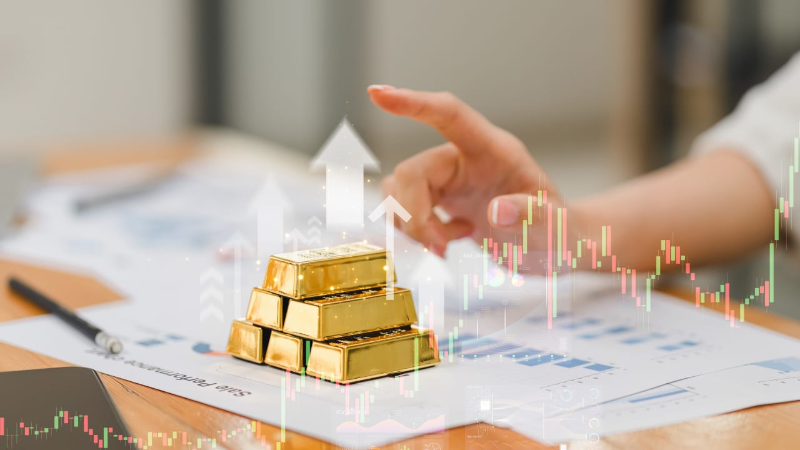Investment policies in U.S. banking have undergone significant changes over the decades. This article explores how regulations and economic shifts have shaped investment strategies and their impact on the banking sector
How U.S. Banking Policies Have Evolved Over Time
The evolution of investment policies in U.S. banking has been significantly influenced by economic events, regulatory changes, and global financial trends. As new challenges arise, the banking sector adapts to maintain stability, meet consumer demands, and ensure long-term profitability. This article examines the key milestones in the evolution of investment policies within the U.S. banking system, how these changes have shaped current practices, and the impact on investment strategies for both financial institutions and investors.
1. The Early Years: Laissez-Faire and Limited Regulation
In the early years of the United States banking system, there was minimal government intervention in financial markets. The period before the Great Depression saw banks adopting a largely
laissez-faire approach to investment, with little oversight over capital markets.
- Lack of Regulation: During the late 19th and early 20th centuries, U.S. banks operated under a relatively free-market system. Investment decisions were made largely based on the discretion of bank managers and the prevailing economic conditions, without significant regulation or government intervention.
- Financial Panic and the Need for Change: The lack of regulatory oversight led to several financial panics and bank failures, most notably the Panic of 1907, which underscored the need for better regulation and investment oversight in the banking sector.
This period of minimal regulation set the stage for major policy changes in the coming decades as the U.S. sought to stabilize its financial system.
2. The Great Depression and the Birth of Modern Banking Regulations
The
Great Depression of the 1930s marked a turning point in U.S. banking policies. The catastrophic financial collapse and widespread bank failures led to the establishment of more stringent regulations to protect consumers and ensure financial stability.
- The Glass-Steagall Act (1933): One of the earliest and most significant regulatory actions was the passage of the Glass-Steagall Act, which aimed to separate commercial banking from investment banking. This was designed to prevent banks from taking excessive risks with depositors' money by limiting the types of investments they could make.
- The Securities Exchange Act (1934): Another key development was the establishment of the Securities and Exchange Commission (SEC), which aimed to regulate the securities markets and prevent fraudulent practices. This was the beginning of a more regulated financial environment in which banks had to disclose their investment activities and adhere to strict transparency standards.
These regulatory frameworks laid the foundation for more cautious investment strategies in the banking sector, focusing on protecting consumer deposits and limiting speculative activities.
3. Post-War Economic Boom and the Rise of Institutional Investments
After World War II, the U.S. economy experienced rapid growth, and so did the banking sector. The post-war boom saw an increase in both personal and institutional investments, which led to a shift in banking investment policies.
- The Rise of Institutional Investors: During this period, banks began to shift from primarily focusing on loans and deposits to managing large-scale investments, especially in corporate bonds, government securities, and real estate. The growth of institutional investors, such as pension funds and insurance companies, provided new sources of capital for banks to invest.
- Diversification of Investment Portfolios: Banks began diversifying their investment portfolios to include a broader range of assets, including international securities and high-risk assets, as economic conditions stabilized and investors sought higher returns. The policy focus shifted from simple deposit-taking to sophisticated asset management strategies.
During this time, the regulatory environment remained relatively stable, with a focus on maintaining financial stability while allowing banks greater flexibility in their investment choices.
4. The 1980s and 1990s: Deregulation and the Growth of Financial Innovation
The 1980s and 1990s marked a period of
deregulation in the U.S. banking sector, culminating in a series of reforms that allowed banks to expand their investment activities. This era also saw the rise of
financial innovation, as new investment products and financial instruments emerged.
- The Garn-St Germain Depository Institutions Act (1982): This legislation allowed banks to engage in riskier activities, such as commercial real estate investments, which contributed to an increase in lending and investment opportunities.
- The Repeal of Glass-Steagall (1999): Perhaps the most significant deregulation occurred with the repeal of the Glass-Steagall Act in 1999, which allowed commercial banks to once again engage in investment banking activities. This led to the growth of large financial conglomerates that offered a wide range of banking, investment, and insurance services under one roof.
- The Growth of Derivatives and Securitization: During this period, banks increasingly turned to derivatives and securitized products as tools for investment and risk management. The use of complex financial instruments became widespread, and banks began offering innovative products such as mortgage-backed securities (MBS) and collateralized debt obligations (CDOs).
While these developments brought increased profitability for many banks, they also laid the groundwork for the financial instability that would later emerge in the 2008 financial crisis.
5. The 2008 Financial Crisis and the Return of Regulation
The
2008 global financial crisis was a defining moment in the evolution of investment policies in U.S. banking. The widespread collapse of financial institutions and the failure of major banks prompted a massive overhaul of banking regulations.
- The Dodd-Frank Wall Street Reform and Consumer Protection Act (2010): In response to the crisis, the U.S. government passed the Dodd-Frank Act, which aimed to reduce risk in the financial system and increase consumer protections. The act imposed strict capital requirements, created the Consumer Financial Protection Bureau (CFPB), and introduced new regulations on derivatives trading and systemically important financial institutions (SIFIs).
- The Volcker Rule: Part of Dodd-Frank, the Volcker Rule limited banks’ ability to engage in proprietary trading and restricted their investments in hedge funds and private equity. This was aimed at reducing speculative risk-taking and ensuring that banks focused on their core functions.
These regulatory changes marked a return to a more cautious and risk-averse approach to investment, with banks required to hold more capital, limit risky investments, and undergo regular stress tests.
6. Current Trends and the Future of Investment Policies in U.S. Banking
In recent years, U.S. banks have faced a changing landscape, driven by both evolving
regulatory policies and
technological advancements. The continued shift toward
sustainable investing and the increasing reliance on
digital financial services are reshaping investment strategies.
- Emphasis on ESG Investing: As sustainability and social responsibility become more important to investors, banks are incorporating ESG (Environmental, Social, and Governance) factors into their investment decisions. New regulatory frameworks, such as the Task Force on Climate-related Financial Disclosures (TCFD), are encouraging banks to disclose their exposure to climate risks and align their portfolios with green investments.
- FinTech and Digital Transformation: The rise of FinTech and blockchain technologies is also changing how banks approach investment. From cryptocurrency investments to AI-powered trading platforms, the digital revolution is transforming investment management and creating new opportunities for banks to diversify their portfolios and offer innovative products to clients














